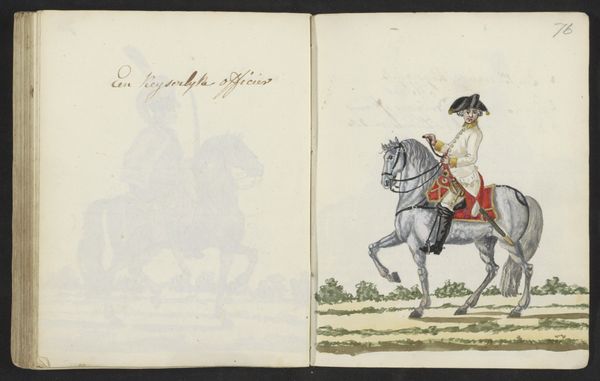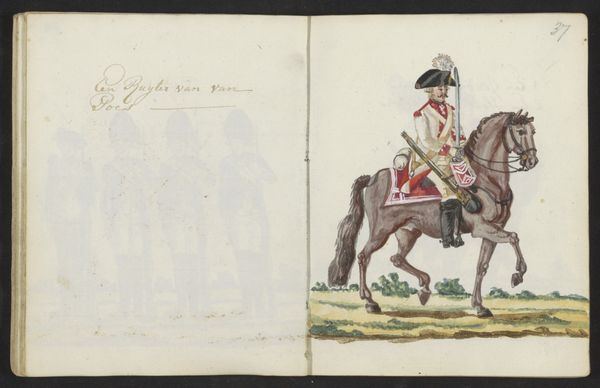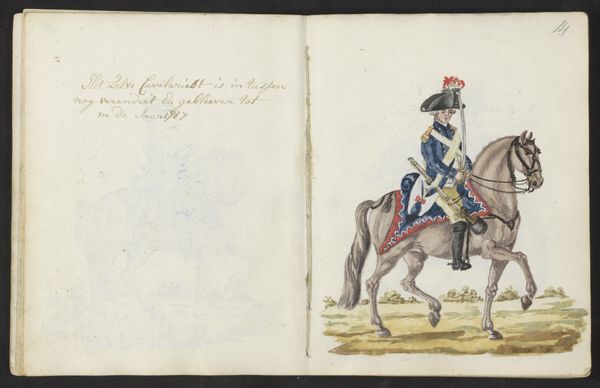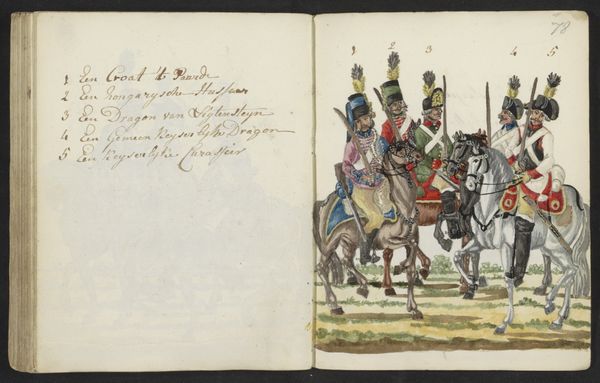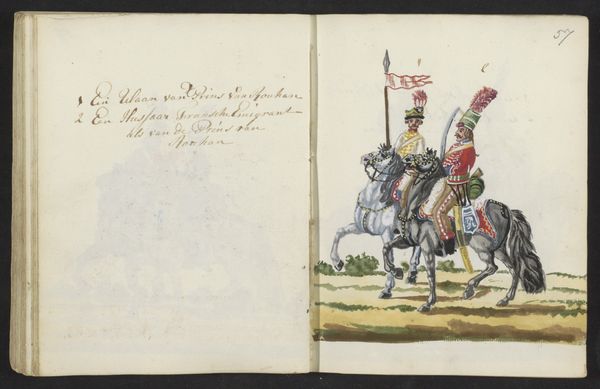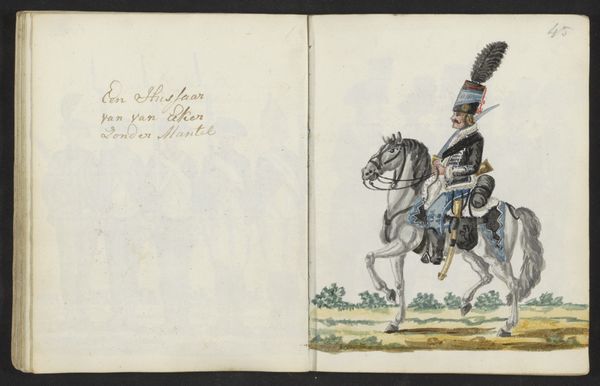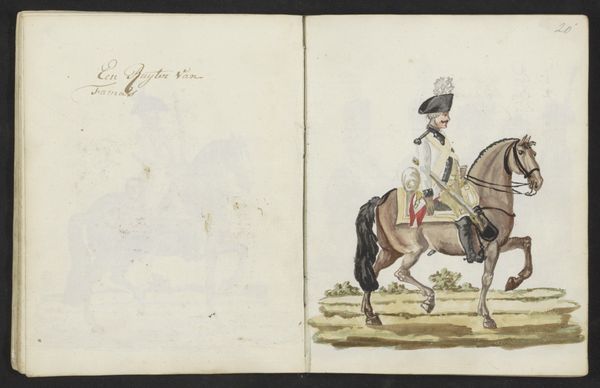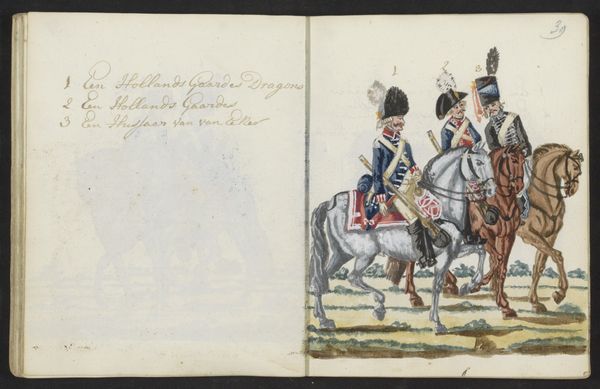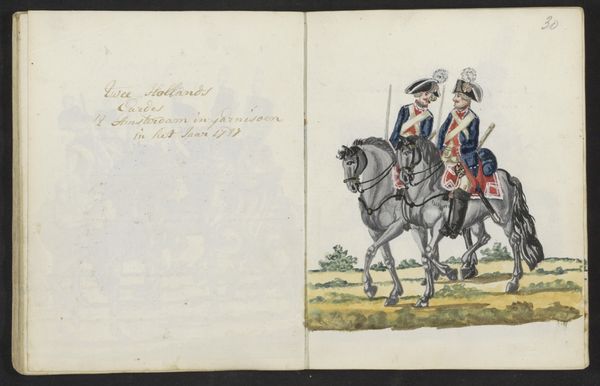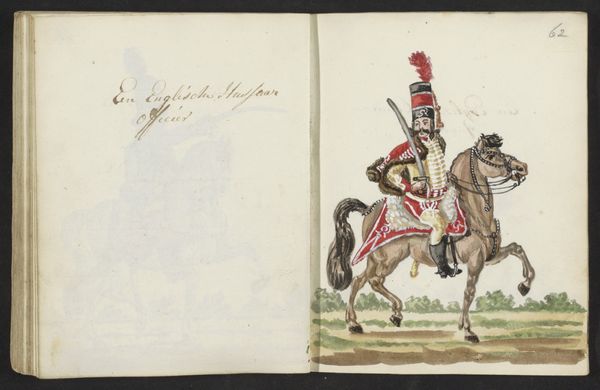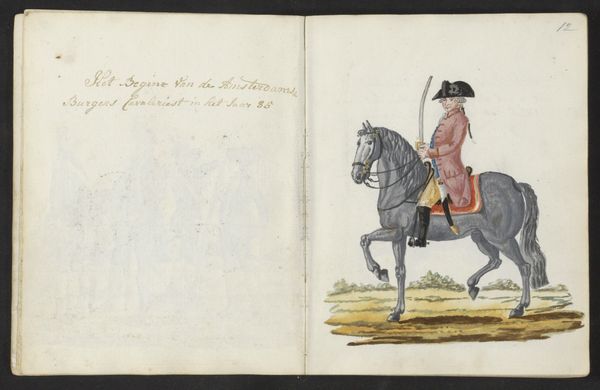
drawing, watercolor, pen
#
portrait
#
drawing
#
pen sketch
#
watercolor
#
coloured pencil
#
romanticism
#
pen
#
watercolour illustration
#
history-painting
Dimensions: height 197 mm, width 310 mm
Copyright: Rijks Museum: Open Domain
Curator: This watercolour and pen drawing from 1795 by S.G. Casten depicts a "Uniform van een ruiter van het Regiment van der Hoop"—Uniform of a Rider of the Regiment Van der Hoop. Editor: My first thought is one of restraint and a touch of melancholic charm. The muted colors and delicate lines give it a dreamlike quality, even while portraying someone associated with military power. Curator: That is astute, because at the end of the 18th century, these detailed illustrations were crucial for standardizing and disseminating military fashion. Think of it as early uniform regulation, rendered with an artistic eye. But notice, too, the left-hand page contains additional illustrations and notations on associated figures from the time. Editor: Absolutely, but it is fascinating how even in a document seemingly purposed for regulation, we see the markers of status and privilege carefully delineated, from the elaborate plume on the rider’s hat to the finely rendered grey horse. I wonder, though, who was this 'van der Hoop,' and who were they "hooping" against? What was the colonial context here? Curator: The Regiment van der Hoop held historical significance within the Dutch military, existing in various forms across changing political landscapes, often in colonial territories. Editor: That’s right, so this isn't just a portrait. It becomes a snapshot of the politics of the time. Even the artistic style evokes Romanticism with an echo of social hierarchies and the beginnings of imperial decline. The image on the left seems to show, faintly, others marching or presenting themselves. I can't see quite clearly what they represent, but they could represent more people, lower status, less individual... Curator: True, but this was, above all, functional. Imagine officers consulting these to ensure their troops met appearance standards—while simultaneously reflecting those ingrained social distinctions. Editor: Yes, form follows function. Ultimately, art, even "practical" art like this, offers a lens to examine the performance of identity, especially where issues of power, social roles, and, as you point out, visibility intersect. Curator: I think examining these portraits within their full historical setting grants them deeper resonances, connecting attire to the larger social, economic, and even philosophical narratives. Editor: It’s a sobering reminder of how fashion—and representation—have always been intertwined with political forces, class struggles, and the construction of historical narratives. I wonder what our uniforms tell us today.
Comments
No comments
Be the first to comment and join the conversation on the ultimate creative platform.
